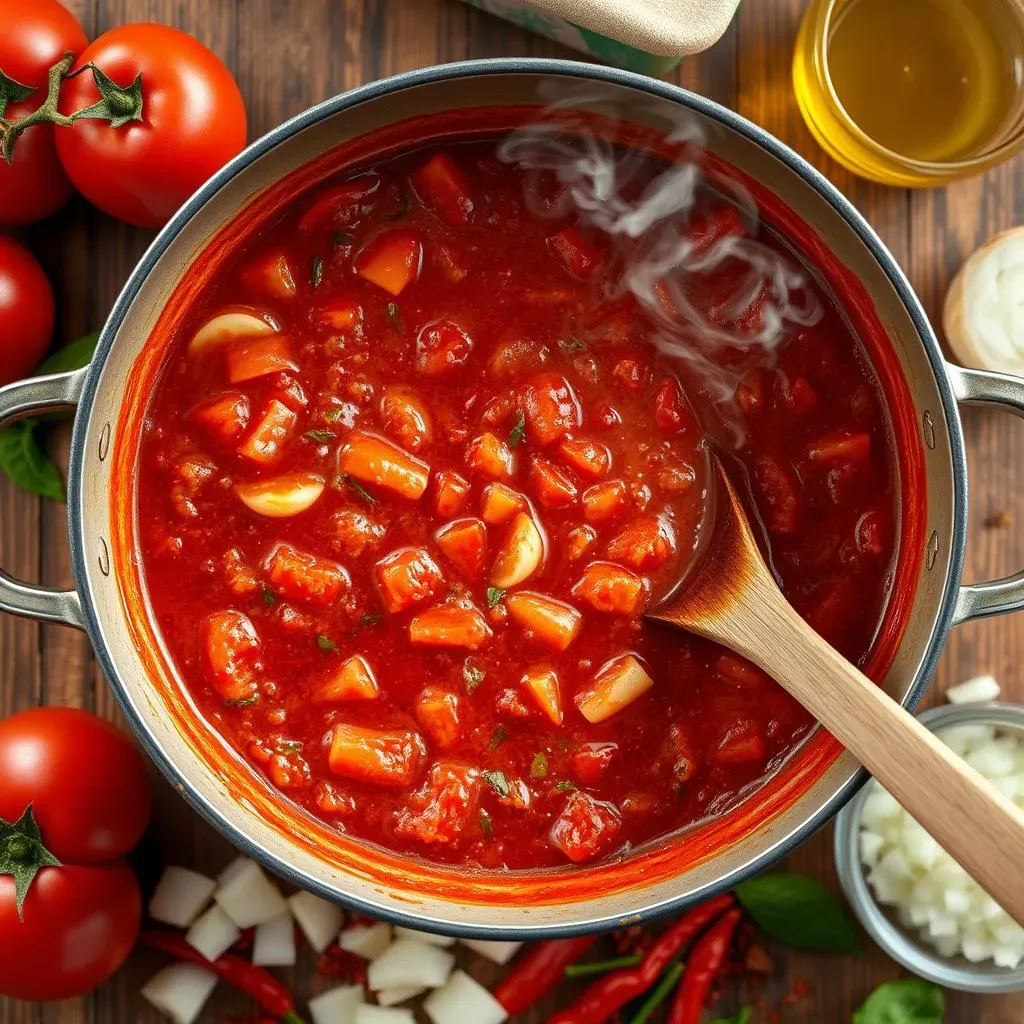Table of Contents
Who doesn't love a good meatball sub? But let's be honest, sometimes those takeout versions just don't cut it. They can be bland, greasy, and leave you feeling less than satisfied. That's where this **homemade meatball sub recipe** comes in! Forget settling for mediocre – we're diving headfirst into creating the ultimate meatball sub experience, right in your own kitchen.
Crafting the Perfect Homemade Meatballs for Your Sub

Crafting the Perfect Homemade Meatballs for Your Sub
The Meatball Foundation: Choosing Your Ground Meat
Alright, future meatball maestros, let's talk meat. The foundation of any great meatball is, well, the meat! You've got options, and the blend you choose will seriously impact the final flavor and texture. I personally love a mix of ground beef and pork. The beef gives you that classic meatball flavor, while the pork adds richness and keeps things nice and moist.
Don't be afraid to experiment! Some people swear by adding ground veal to the mix for an even more tender meatball. You can also use ground turkey or chicken for a lighter option, but be mindful of keeping them moist – these tend to dry out more easily. Whatever you choose, make sure it's good quality!
Flavor Boosters: Seasonings and Binders
so you've got your meat. Now it's time to crank up the flavor! This is where you can really get creative and tailor your meatballs to your own taste. But there are a few essential seasonings that I always include. First, garlic – and lots of it! Freshly minced is always best, but garlic powder will do in a pinch. Then, some Italian seasoning (or a mix of dried oregano, basil, and thyme), salt, and pepper.
But don't stop there! A little grated Parmesan cheese adds a nutty, savory note. And for a touch of sweetness, a pinch of sugar helps balance out the acidity of the tomato sauce later on. As for binders, I like to use a combination of breadcrumbs and an egg. The breadcrumbs help absorb excess moisture and keep the meatballs tender, while the egg helps bind everything together.
- Ground Beef: Classic flavor, good structure.
- Ground Pork: Richness, moisture.
- Ground Veal: Extra tenderness.
- Ground Turkey/Chicken: Lighter option (be careful not to dry out).
Technique Matters: Mixing and Cooking Your Meatballs
Now for the fun part: getting your hands dirty! When mixing your meatball mixture, be careful not to overmix. Overmixing can result in tough, dense meatballs. Gently combine all the ingredients until just combined. I like to use my hands for this, but a wooden spoon works too.
Once your mixture is ready, it's time to form the meatballs. I usually aim for about 1.5-2 inches in diameter – perfect for fitting snugly in a sub roll. You can either bake or fry your meatballs. Baking is healthier and easier, but frying gives them a nice crispy exterior. If baking, preheat your oven to 375°F (190°C) and bake for about 20-25 minutes, or until cooked through. If frying, heat some olive oil in a skillet over medium heat and cook for about 8-10 minutes, turning occasionally, until browned on all sides.
Cooking Method | Pros | Cons |
|---|---|---|
Baking | Healthier, easier cleanup | Less crispy exterior |
Frying | Crispy exterior, more flavor | More fat, more cleanup |
Simmering the Best Marinara Sauce: A Match Made in Meatball Sub Heaven

Simmering the Best Marinara Sauce: A Match Made in Meatball Sub Heaven
The Tomato Base: Choosing Your Tomatoes
so you've got your meatballs prepped and ready. Now, let's talk sauce! Because, let's be real, a meatball sub is only as good as its marinara. And the key to an amazing marinara? It all starts with the tomatoes.
You've got a few options here, and each will bring a slightly different flavor profile to the party. Crushed tomatoes are my go-to for a classic, chunky sauce. They provide great texture and a bright, fresh flavor. If you prefer a smoother sauce, you can use tomato puree or passata. For a richer, more intense flavor, try using San Marzano tomatoes – they're considered the gold standard for Italian cooking. Just make sure to crush them by hand before adding them to the pot.
Canned tomatoes are super convenient, especially during the off-season when fresh tomatoes aren't at their peak. But if you happen to have access to ripe, juicy tomatoes from your garden or a local farmer's market, definitely go for it! Roasting them before adding them to the sauce will deepen their flavor and add a touch of sweetness.
Building Flavor: Aromatics, Herbs, and Spices
Alright, so you've got your tomato base sorted. Now it's time to layer in the flavors! This is where your marinara sauce really starts to come alive. First up: aromatics. I'm talking garlic, of course – because what's Italian food without garlic? Sauté it in some olive oil until it's fragrant, but be careful not to burn it! Burnt garlic will make your sauce bitter.
Then, add some onion. Diced finely, it'll melt into the sauce and add a subtle sweetness. For herbs, I like to use a combination of dried oregano, basil, and thyme. But feel free to experiment with fresh herbs if you have them on hand! A bay leaf or two adds a depth of flavor that you just can't get from dried herbs.
As for spices, a pinch of red pepper flakes adds a little kick, while a teaspoon of sugar helps balance out the acidity of the tomatoes. And don't forget salt and pepper! Season to taste, and adjust as needed throughout the simmering process.
- Garlic: Essential aromatic, adds pungent flavor.
- Onion: Adds sweetness and depth.
- Oregano, Basil, Thyme: Classic Italian herbs.
- Red Pepper Flakes: Adds a touch of heat.
Low and Slow: The Key to a Delicious Sauce
Now for the most important part: simmering! This is where the magic happens. Once you've added all your ingredients to the pot, bring the sauce to a simmer, then reduce the heat to low, cover, and let it cook for at least 15 minutes, or even longer if you have the time. The longer it simmers, the more the flavors will meld together and the richer the sauce will become.
Stir the sauce occasionally to prevent it from sticking to the bottom of the pot. And if it starts to get too thick, add a little bit of water or broth to thin it out. Taste the sauce periodically and adjust the seasonings as needed. Remember, you're the chef here!
Once the sauce has simmered to your liking, remove it from the heat and let it cool slightly before using it to assemble your meatball subs. And if you have any leftover sauce, don't throw it away! It's delicious on pasta, pizza, or even just as a dipping sauce for breadsticks.
Simmer Time | Flavor Development | Texture |
|---|---|---|
15 Minutes | Good flavor melding | Slightly chunky |
30 Minutes | Richer, more complex flavor | Smoother |
1 Hour+ | Intense, deeply developed flavor | Very smooth, almost velvety |
Assembling Your Dream Homemade Meatball Sub: Bread, Cheese, and More

Assembling Your Dream Homemade Meatball Sub: Bread, Cheese, and More
The Perfect Roll: Choosing Your Bread
so you've got the meatballs and the sauce – the heavy hitters. But don't underestimate the importance of the bread! It's the vessel that holds everything together, and it can make or break your meatball sub experience.
My go-to is a classic Italian hoagie roll. It's got that perfect combination of soft interior and slightly crusty exterior. But there are other options too! A French baguette, sliced lengthwise, can also work well. Or, if you're feeling fancy, try a ciabatta roll. Just make sure whatever you choose is sturdy enough to hold all those juicy meatballs and sauce without falling apart.
Toasting the bread is crucial! It adds a nice bit of texture and prevents the bread from getting soggy. You can either toast it in the oven, under the broiler, or in a toaster oven. Just keep a close eye on it so it doesn't burn!
Cheese, Please! Selecting the Right Cheese
Now for the cheese! This is where things can get really fun. The classic choice for a meatball sub is mozzarella. It's mild, melty, and goes perfectly with the flavors of the meatballs and marinara sauce. But don't be afraid to experiment!
Provolone is another great option. It has a slightly sharper flavor than mozzarella, which adds a nice bit of complexity. For a really decadent treat, try adding some fontina cheese. It's super creamy and melty, and it will take your meatball sub to the next level.
Whatever cheese you choose, make sure to use plenty of it! I like to layer it on top of the meatballs and sauce, then pop the sub under the broiler for a minute or two to get it nice and bubbly.
Cheese Type | Flavor Profile | Melting Ability |
|---|---|---|
Mozzarella | Mild, milky | Excellent |
Provolone | Slightly sharp, nutty | Good |
Fontina | Creamy, rich | Excellent |
Assembly Time: Building Your Masterpiece
Alright, you've got your bread, your cheese, your meatballs, and your sauce. It's time to put it all together! Start by slicing your toasted roll lengthwise. Then, spoon a generous amount of marinara sauce onto the bottom half of the roll.
Next, pile on the meatballs! I usually aim for about 4-5 meatballs per sub, depending on their size. Then, top with your cheese of choice. If you're using mozzarella or provolone, you can just layer it on top. If you're using fontina, you might want to shred it first so it melts more evenly.
Finally, pop the sub under the broiler for a minute or two to melt the cheese. Keep a close eye on it so it doesn't burn! Once the cheese is melted and bubbly, remove the sub from the broiler and top with any additional toppings you like. Fresh basil, red pepper flakes, and grated Parmesan cheese are all great options. Then, close the sub and get ready to devour your masterpiece!
Homemade Meatball Sub Recipe Variations and Serving Suggestions

Homemade Meatball Sub Recipe Variations and Serving Suggestions
Spice It Up: Meatball Sub Variations
so you've mastered the classic **homemade meatball sub recipe**. But what if you're feeling a little adventurous? The beauty of cooking is that you can always put your own spin on things! One of my favorite variations is to add a little heat. Mix some chopped jalapeños into your meatball mixture for a spicy kick. Or, drizzle some hot sauce over the finished sub.
Another fun variation is to swap out the traditional marinara sauce for something different. Pesto is a surprisingly delicious alternative. Or, try a creamy Alfredo sauce for an extra-rich and decadent sub. You could even go with a barbecue sauce for a sweet and smoky twist.
And don't forget about the cheese! I love adding a sprinkle of crumbled blue cheese or feta cheese for a tangy, salty flavor. Or, try a combination of different cheeses for a more complex flavor profile. The possibilities are endless!
Side Dish Sensations: What to Serve with Your Sub
So you've got your amazing **homemade meatball sub recipe** ready to go. But what should you serve with it? A classic side dish is always a good choice. A simple green salad with a vinaigrette dressing is a light and refreshing complement to the rich and hearty sub.
Or, if you're feeling a little more indulgent, try some crispy french fries or onion rings. Coleslaw is another great option – the creamy, tangy flavor pairs perfectly with the meatballs and sauce. If you want to keep things light, consider serving your meatball subs with a side of roasted vegetables. Broccoli, carrots, and bell peppers are all great choices.
And of course, no meatball sub meal is complete without a cold drink! Iced tea, lemonade, or a refreshing beer are all great options. Whatever you choose, make sure it complements the flavors of your sub.
Side Dish | Flavor Profile | Why It Works |
|---|---|---|
Green Salad | Light, refreshing | Balances the richness of the sub |
French Fries | Salty, crispy | Classic pairing, adds texture |
Coleslaw | Creamy, tangy | Contrasts with the savory flavors |
Your Homemade Meatball Sub Recipe Adventure Awaits!
So, there you have it – your guide to crafting the ultimate homemade meatball sub. From the first mix of ground beef and pork to that final, satisfying bite, every step is a chance to create something truly special. Forget those bland, disappointing takeout versions. With this homemade meatball sub recipe, you're in control of the flavor, the quality, and the sheer deliciousness. Gather your ingredients, fire up the stove, and get ready to experience meatball sub perfection. Trust me, once you've tasted a homemade version, you'll never go back!